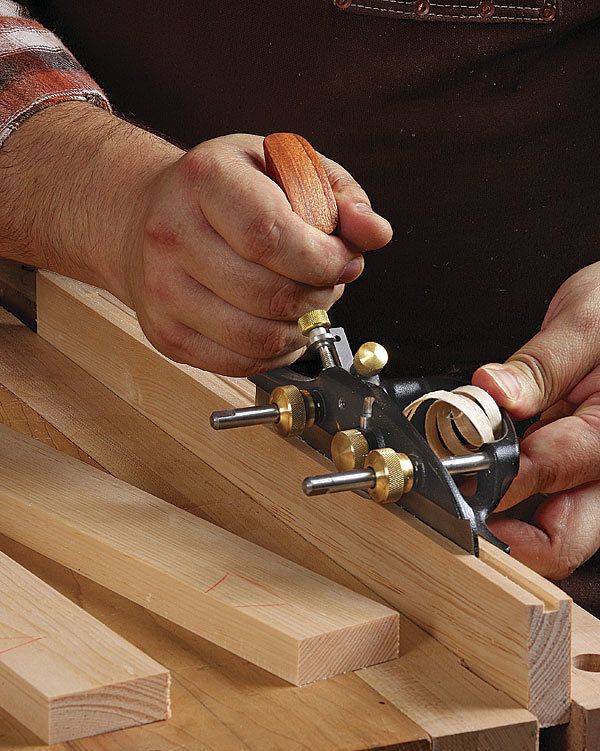4 planes for joinery
Get perfect dadoes, grooves, rabbets, and tenons in no time
Synopsis: Specialty planes make it easier to build furniture by hand. By adding a shoulder plane, a router plane, a rabbet plane, and a plow plane to his collection, Vic Tesolin can knock out just about any traditional furniture joint quickly and accurately. The shoulder plane is used to fine-tune tenons, trimming both shoulders and cheeks for a perfect fit. A router plane trims the bottom of a recess flat and excels at cutting hinge mortises, cleaning up dadoes, and trimming tenon cheeks. The rabbet plane makes rabbets a breeze, and the plow plane cuts perfect grooves for a drawer or a frame-and-panel door.
At just 170 sq. ft., my shop is—without question—small. When I first moved into it, I was forced to think carefully about which machines were essential and which I could do without. In the end, only my bandsaw, drill press, and thickness planer survived the cut. As a result, most of my woodworking, including all of the joinery, is done with hand tools. After I made that decision, it didn’t take long to realize that to cut joinery by hand I’d need more than just my backsaw and a set of chisels. So over time I added some specialty planes to my collection. With these planes—shoulder, router, rabbet, and plow—I’m able to knock out just about any traditional furniture joint quickly and accurately. Here I’ll demonstrate how I use each of these planes in my furniture making, and I’ll give you some tips on setting them up for best results. Vic Tesolin enjoys building furniture with hand tools in his well-insulated shop outside of Ottawa, Ont., Canada.
Fine-tunes tenons
Cutting the mortise-and-tenon joint by hand means sawing the shoulders and the cheeks with a backsaw. And unless your saw work is perfect, you’ll need to trim both the cheeks and the shoulders to get the tenon to fit the mortise tightly with no gaps. This is where the shoulder plane comes in. As its name suggests, it excels at trimming shoulders. Set for a light cut, it can also do a good job of trimming the cheeks. Your first shoulder plane should have a 3⁄4-in.-wide blade. It’s small enough for shoulders, but wide enough to trim most cheeks in two passes. Comfort is important, too, so give the plane a spin before buying it if you can. Whether you buy new or used, check that the blade is slightly wider than the body, and that the sole is square to both sides. Finally, look for an adjustable mouth, so you can tighten it for light shavings.
Interview with the author: Shop Talk Live 77: A Woodworker’s Dream Job
For the full article, download the PDF below:
Fine Woodworking Recommended Products

Pfiel Chip Carving Knife

Olfa Knife

Marking knife: Hock Double-Bevel Violin Knife, 3/4 in.























Log in or create an account to post a comment.
Sign up Log in